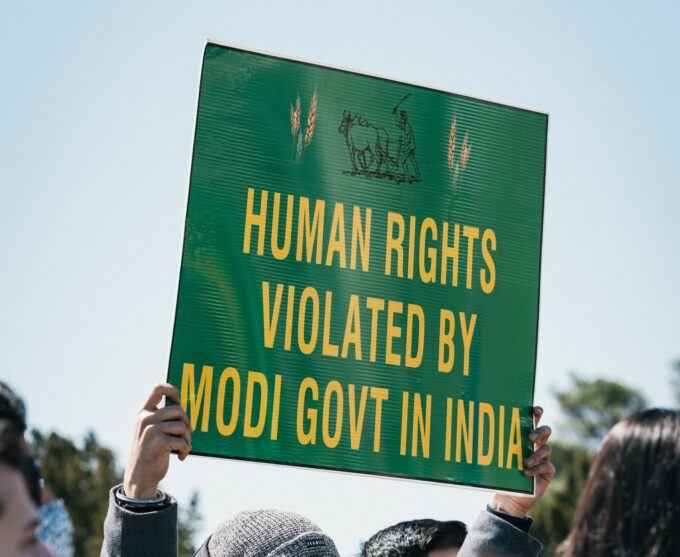
Photo by Gayatri Malhotra
Prime Minister Narendra Modi’s lockdown speech of March 24, 2020 gave a nation of 1.4 billion people four hours to shut itself down. It would devastate hundreds of millions of livelihoods within days. Minutes after Modi’s speech, his government listed the essential services that would remain operational through the lockdown.
Refreshingly, that included ‘print and electronic media, telecommunications, internet services, broadcasting and cable services.’
In the next few months, major media houses, mostly corporate-owned or controlled, sacked between 2,000 and 2,500 journalists. They achieved much of this by extracting ‘voluntary resignations and retirements.’ The classification of media as an essential service did not save a single job. Or life. Covid-19 killed at least 700 journalists in the first 20 months of the pandemic.
All these numbers are gross underestimates. The sackings, especially. I was a member of the Press Council of India sub-committee to investigate the retrenchments; our letters seeking information from major media houses were met with anger and aggressive lawyers’ replies.
The country’s biggest newspaper group told us that the Press Council had no right to question the sackings. They were recruitment and labor issues and had nothing to do with press freedom (the Council’s purview). The government stayed silent on the sackings.
The media’s failure to cover the exodus of millions of migrant laborers from cities back to their villages was not unrelated to the Great Downsizing. These same segments of the media, too, have said barely a word in their editorials on the arrests, detentions, denial of bail, and the hundreds of cases against media persons—some under sections of laws not applied to journalists in over 100 years. The ‘mainstream’ media’s silence on the assault on democracy that India has seen for years now is not just about cowardice—though there’s dollops of that—but also about complicity and collaboration, coaxing and coercion.
Sure, there are rare exceptions—like the Dainik Bhaskar group that held out bravely despite the income tax and other raids on it. Mostly, though, truly courageous resistance has come from smaller, non-corporate media whose journalists and editors suffer severe harassment, tax raids, arrests, jailing. That have seen donors and sponsors pull their funds in fear. That are unsure of paying their staff salaries in the current financial year.
The new trend: arresting journalists and editors for ‘economic offenses’—‘money laundering’ being the official favorite. That vilifies journalists, hurting their credibility and making it hard for them to be viewed as political prisoners.
It’s worth knowing that four major public intellectuals assassinated in the past decade—Narendra Dabholkar, Govind Pansare, M.M. Kalburgi and Gauri Lankesh—had this in common: they were journalists, columnists or writers who wrote in Indian languages. Also, rationalists who challenged religious fundamentalism.
Meanwhile, the super-rich, heading India’s biggest corporate houses, are rapidly acquiring more media properties. (With 166 of them, India ranks 3rd among nations in dollar billionaires. But ranks 131 in the UN Human Development Index). Owners whose billions flow from government contracts and huge public resources privatized for their benefit, and who contribute fantastic sums to the ruling party.
What did bother the government was the Paris-based Reporters Sans Frontieres’ ranking India 142 (among 180 nations) in the World Press Freedom Index, 2020. (This year’s rank – 150). And Twitter’s latest transparency report confirms India made more ‘legal’ demands than any other nation to remove content posted by verified journalists and news outlets during July-December 2021. We’ve also seen what amounts to months of internet shutdowns across entire regions like Kashmir.
Indian journalists can always be shown the error of their ways. The worst you can do with non-Indians is to deny them visas. Yet, they acted swiftly to rebut the RSF report and index ranking.
In May 2020, the government set up an ‘Index Monitoring Cell’ (IMC) on the directive of the Union Cabinet Secretary, perhaps the country’s most powerful bureaucrat. One who reports directly to the two most important men in India—the Prime Minister and Home Minister. I was one of the IMC’s two original journalist members.
In December 2020, a subgroup presented the committee with a draft report striking for the absence of the word ‘draft’ on its cover. It failed to reflect the content of our discussions. And it made outrageous claims, some of which seemed to mock the sufferings of journalists in Kashmir.
I wrote a note of dissent which, among other things, listed 100 instances of arrests of, legal notices to, and FIRs and cases filed against, journalists in the span of just some months. Such as the October 2020 arrest of Siddique Kappan, a freelancer from Kerala who had gone to Uttar Pradesh to cover the Hathras rape and murder atrocity against Dalits. He was not allowed to meet a lawyer for weeks and remains in jail 22 months later.
Or Zubair Ahmed, a journalist in the Andamans booked on multiple charges for this tweet: ‘Can someone explain why families are placed under home quarantine for speaking over phone with Covid patients?’ Ahmed died by suicide this July, supposedly in depression—but an investigation is still on.
Immediately after that note of dissent went in—the committee simply vanished and has never been heard of since. Right to Information queries have failed to elicit any reasons for this. My friends find me ungrateful. ‘At least,’ they say, ‘it was the committee report that disappeared, not the journalist.’
And so you have the Indian media @75.
For three of my four decades as a journalist, I argued that the Indian media are politically free but imprisoned by profit. Today I’d say they are still shackled by profit, but are increasingly politically imprisoned as well.
This was first published by PEN.
Sainath’s new book, The Last Heroes: Footsoldiers of Indian Freedom, will be out later this year.